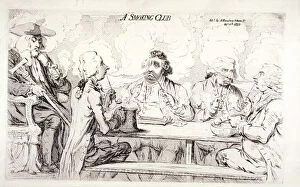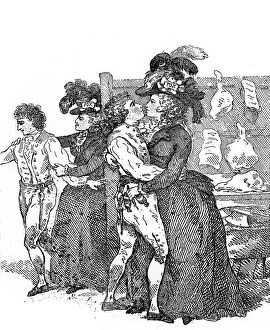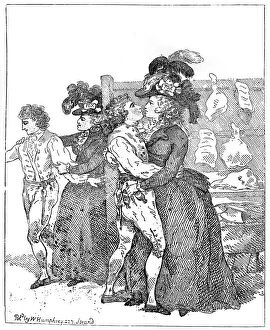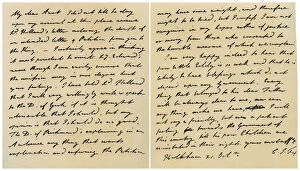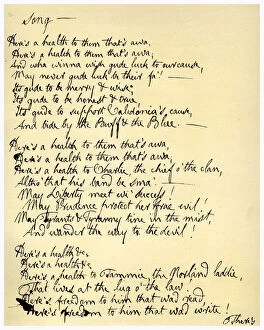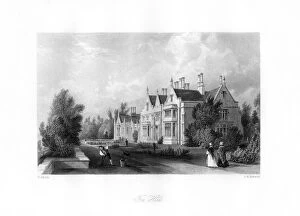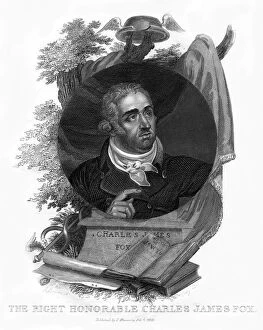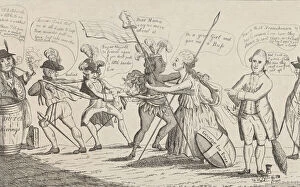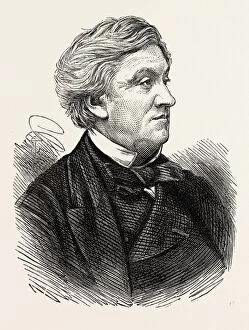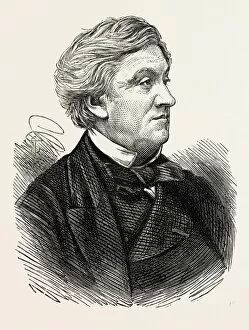Charles Fox Collection (#3)
Charles Fox was a prominent figure in British politics during the late 18th and early 19th centuries
For sale as Licensed Images
Choose your image, Select your licence and Download the media
Charles Fox was a prominent figure in British politics during the late 18th and early 19th centuries. Known for his wit, charm, and controversial views, he left an indelible mark on the political landscape of his time. One of Fox's notable works was "The Loves of the Fox and The Badger, or The Coalition Wedding, " a satirical play that mocked the political alliance between him and Lord North in January 1784. This production showcased his sharp sense of humor and ability to entertain audiences with biting social commentary. In another significant moment, we see William Pitt, the Younger addressing the Commons in 1793. Painted by Anton Hickel, this portrait captures Fox's rival delivering a powerful speech that would shape their ongoing political rivalry. "The General Toast: Honor and Honesty, Love and Loyalty" depicts an event from October 1786 where Fox raises a glass alongside friends. It showcases his affinity for good company and celebration while highlighting his commitment to principles such as honor and loyalty. However, not all depictions were flattering towards Charles Fox. In "John Bulls First Visit to his Old Friend the New Secretary, " published in March 1806, we witness satire aimed at him as he takes up a new position within government. Such caricatures were common during this period as artists used their craft to comment on politicians' actions. Despite these criticisms, Charles Williams portrays another side of Fox through works like "Fishing for Flats" (1806) or "The Honeymoon" (1806). These pieces reveal a more lighthearted aspect of his character – enjoying leisurely activities or celebrating personal milestones – reminding us that even politicians have moments away from public scrutiny. Fox's influence extended beyond politics; he also engaged with intellectual debates of his time.


